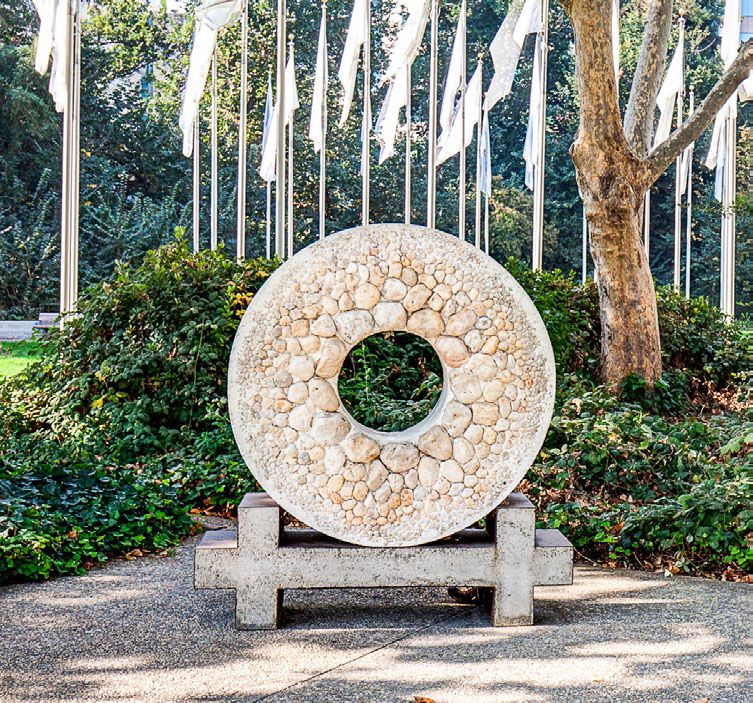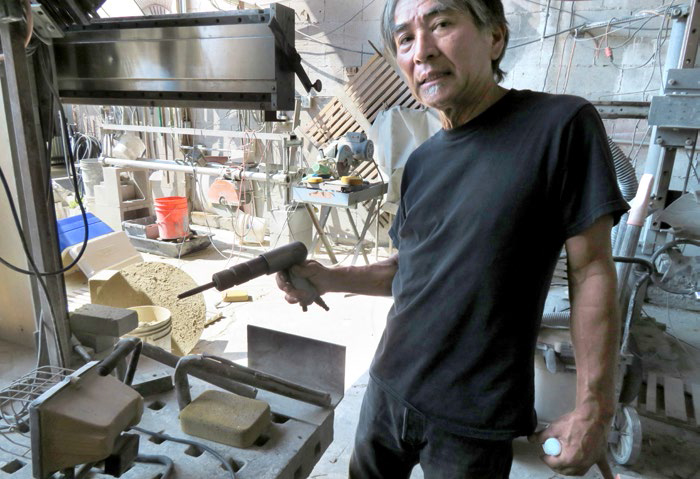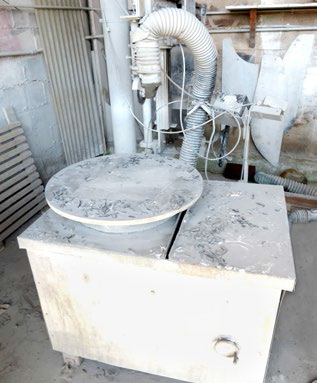Light as a Stone in Flight - Page 2
 |
|
|
 |
 |
|
|
 |
 |
|
|
|
|
It's hard to find an artist in Silicon Valley more connected to the local art scene. Matsumoto's role there, says Mary Allan, Lon's wife, who has served on the boards of several South Bay museums and arts organizations, is "Huge! Huge! He just knows everybody. And if you want to know something, you contact Ken and he'll just give you a very straight answer. And he's not looking for a thank you."
Matsumoto's art has surprising layers. It's both abstract yet representational, weighty yet without gravity, suggests both the natural and the man-made, delves into history and represents a dialog between man and material.
The Allans say their art collection is almost entirely non-representational. But with its imagery of mountains, with Ken's way of making stone look like a ceramic vessel or even a basket, much of his work evokes landscapes and cultural traditions.
Consider some of his works from the early 1980s that used natural stone to portray jagged mountain peaks. These hark back to camping trips he made as a boy with his parents, who raised him in the Southern California community of Oxnard.
"Ohmigod!" Ken says, recalling the naked granite in the Eastern Sierra and in Death Valley, which became favorite places. "The Eastern Sierra and a place like Death Valley is like looking at a form with its clothes off."
What Matsumoto learned was "the appreciation of nature, and seeing time. That element in my work has been a recurring theme," Ken says. His works show erosion, natural weathering, metal rusting.
Stone, which Matsumoto carefully selects from stone yards, may be his main material, but it is also his subject matter. In a chunk of stone he sees "the physical forces that shape mountains, the same forces that made this stone crack in this particular way."
Stone is also his collaborator in each piece.
"I try to go to the stone yard without an idea. I mean, a general idea I have," Ken says. "But I look at the stones and I try to find a stone that has some potential, and then I'll make something with that in mind. If I go to the stone yard with a particular idea, more often than not I will be frustrated and not be able to find anything."
A piece of stone, Ken says, shows its geological history. "It's sort of nature encapsulated." He also enjoys working with stone that shows the hand of man.
"I see the objects as metaphors for the idea that man and nature are one," Ken has said, "that the results of man's activity on the environment are as much a part of the natural order as the effects of wind and water."
"All of my pieces, although they're heavy, I want to make them appear that they are light. This one has a certain floating aspect to it," he says of a stone vessel that seems to hover at both ends above its pedestal. Adding to the lightness of some of his stone sculptures is that some have sections that are translucent.
"Ken is definitely one of the most respected among the rock sculptor community," says Kerry Adams Hapner, San Jose's director of cultural affairs.




